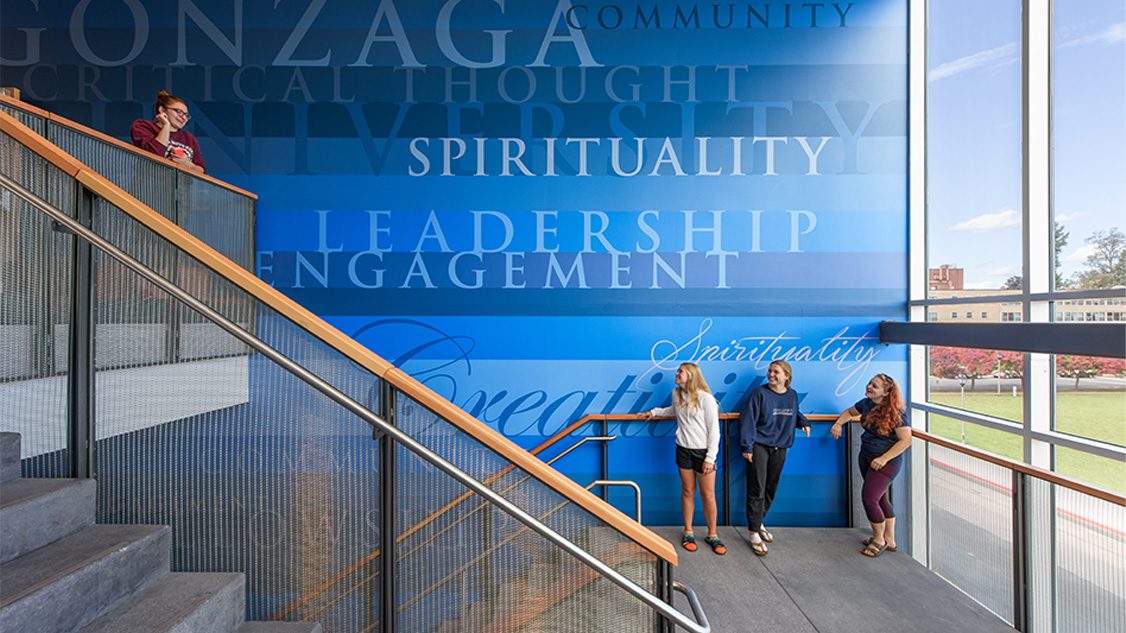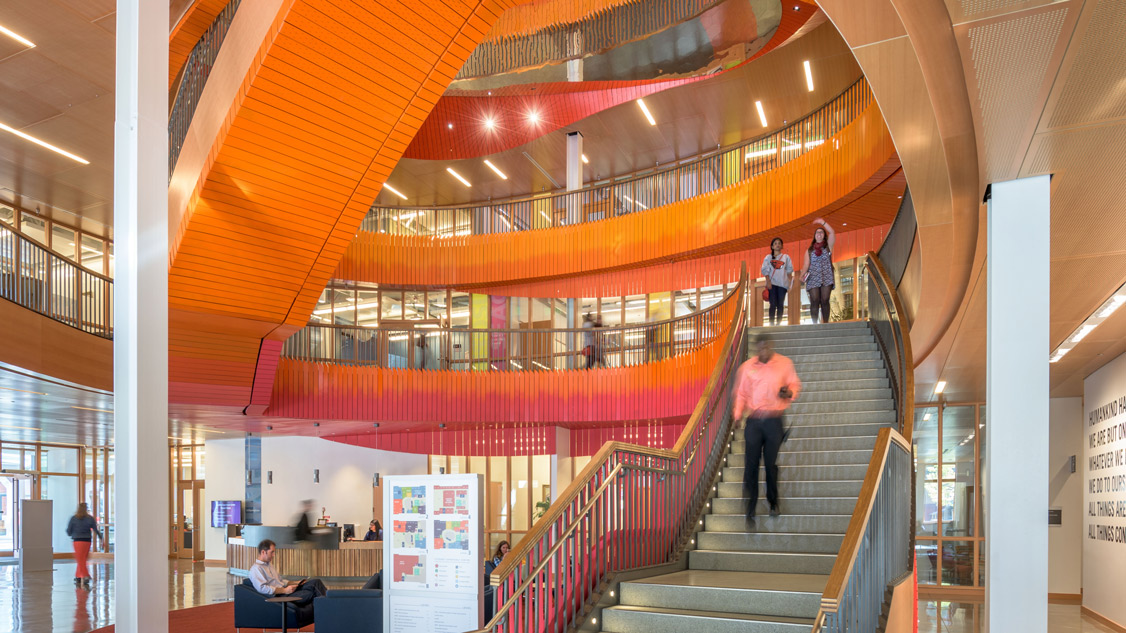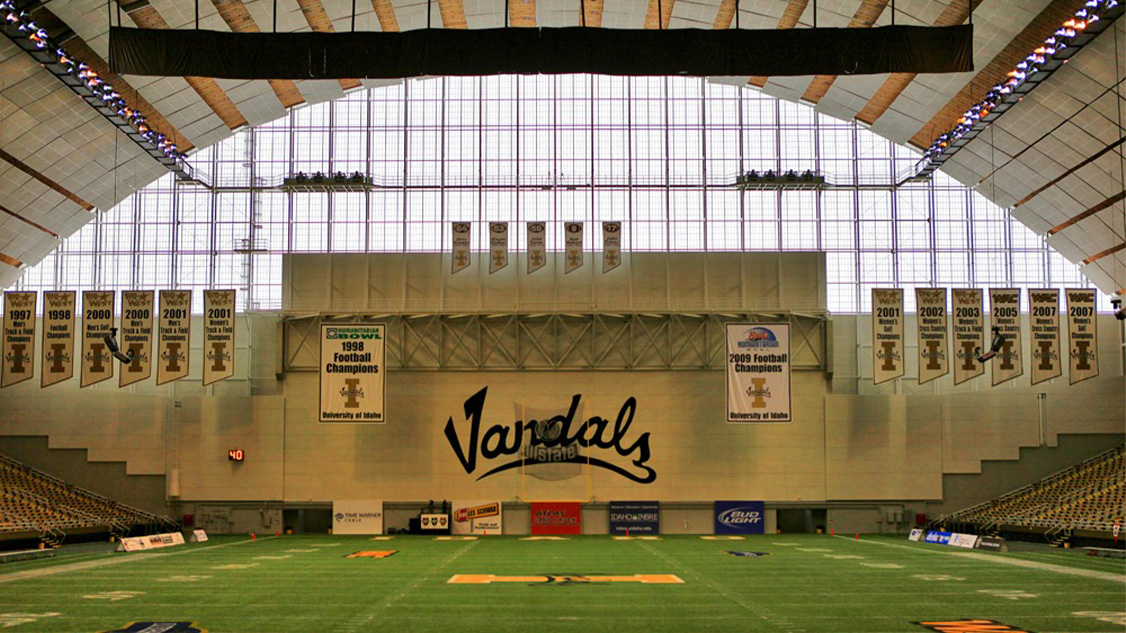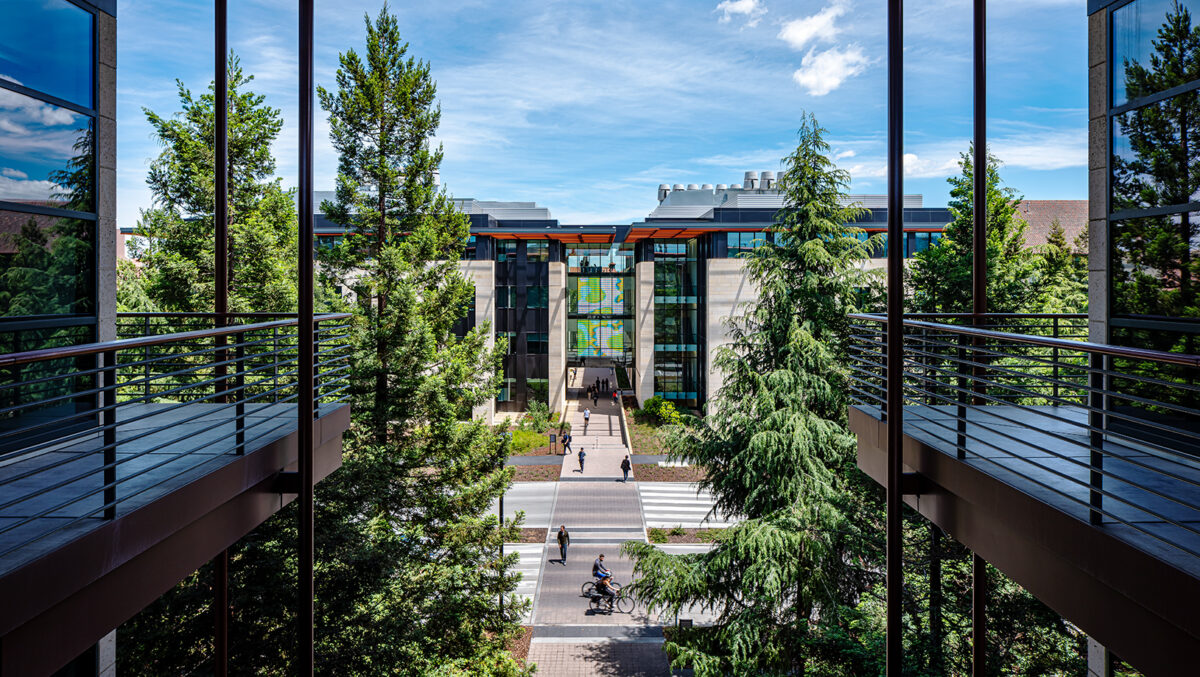Morphogenesis, Stanford University
In his 1952 paper “The Chemical Basis of Morphogenesis,” Alan Turing proposed a mechanism for how patterns can evolve from initially homogeneous biological systems. In a simple example, two substances called “morphogens” (meaning “producers of form”) spread by diffusion and react with each other to change their concentrations, self-organizing into a stable pattern of spots or stripes from almost any initial condition.
Named for Turing’s seminal work, Morphogenesis is an interactive generative art piece designed for the Anne T. and Robert M. Bass Biology Research Building at Stanford University. Visitors engage with the piece through a deceptively simple parametric interface that controls multi-layered Turing patterns. Their designs are contributed to a permanent, evolving video installation that plays on a large-scale media mesh screen spanning the major pedestrian axis between the medical and science quads. This piece has established a new visual identity for the Biology Department that reaches beyond the facade of the building, drawing visitors and passers-by for a moment of wonder and the chance to engage in creative digital form-making.
Adjusting values of variable inputs, the resulting patterns can evoke the stripes on a zebra, spots on a tropical fish, vegetation patterning in arid environments, and even environmental conditions like cloud and wave formations. The combinations are endlessly diverse, giving visitors access to exploratory play in a complex system where many simple interactions lead to emergent structure. This collaborative artwork needs people to interact with it, to design or stumble across the patterns implicit in the model, and to bring them out into the world.
For a deeper look, see our case study.



